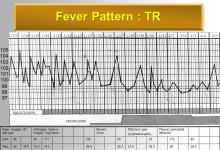Ten Things to Do At Every Visit Save

Busy days, overbooked patients and EMR overloads will certainly derail your day, especially if you don’t have a system to optimize efficiency. However, in your harried efforts, you may overlook several simple, smart, if not crucial, tasks while seeing your next patient.
Visit Must Do’s | Commentary |
1. Greet the patient, warmly, happily (with or without a hand shake), always with direct eye contact. | Remember, most patients do not want to go to the doctor and many have apprehensions. Trust is best established by being humane, friendly and an ally. |
2. Always acknowledge and identify the “other person” who is in the room and been brought along for the visit. | They will also get a vote as to your doctor worthiness. Also they can reinforce your medical plan and you may need to define and clarify who you are questioning and giving instructions to. This should be the patient, but in some circumstances may be the “other” in the room. Document who the “other “ person is in your EMR. |
3. Demand the habitual collection of important data - vital signs, weight, completely filled in survey forms. If you don’t set the expectation then everyone will avoid what it is you demand for good care. | Too many want to skip the scale or not fill out the visit survey forms. If you think it’s important to your care delivery, then it’s important that the staff, patient and you expect these to be done at EVERY VISIT! Download the patient Follow-Up Survey here. |
4. Review and confirm all medications, OTC meds, doses used and which drug are you the prescriber of record. Also, for the most important meds, ask "how often do you skip or miss taking this drug"? | Medical mistakes are preventable and you are responsible for the safety of the drugs you prescribe (that may interact with the drugs you didn’t prescribe). Nonadherence will undermine your care. |
5. Make the patient take off their shoes for a real foot exam. Very important: for those who are disabled, elderly or immobile, you should put the socks and shoes back on and tie their laces to their specifications. | Putting a patients shoe back on maybe the greatest favor you can do (aside from actually examining their feet). |
6. Back Pain: even if you think you know why they have back pain, make sure there is no elevation of calcium, globulins or strange pain, point pain or night pain that might indicate a neoplasia or other occult cause. | Back pain is ubiquitous. Under your care no one with inflammatory back pain or spinal pain from neoplasia should go undiagnosed. |
7. Discuss the one thing that’s on the patients mind. If they have many, make sure you prioritize their most important concern.
| In the course of a frenetic visit, you may miss that one thing that is most important to the patient. The one thing, one question, or one request you can easily do and solidify your role as a master healer. |
8. Document who the patient's primary care provider is and reinforce that regular or annual visits are necessary for all of your rheumatic patients. | Your patients think you’re either the smartest doctor or the one who understands them best. Hence many will forego their PCP. Rheums know that comorbidities are a major and challenge. You need to ensure that an involved and knowledgeable PCP is on board to manage comorbidities, immunizations, and day to day health care. |
9. Update the patient's preferences for their HIPAA list. | This may be as important as a medical power of attorney. |
10.Give the patient clarity – hand them a copy of their updated med list, a copy of the note you just wrote and spell out the goals and rules going forward. | A new prescription, or refill, is just not enough. |










If you are a health practitioner, you may Login/Register to comment.
Due to the nature of these comment forums, only health practitioners are allowed to comment at this time.